
Point to Paper – The mysterious letter from 1528
It was a lovely summer morning in Umbria. At least that’s what I imagine. The date was the 5th of August 1528. A man was out walking and had a deep wrinkle on his forehead. He had no time to think about the fine weather or the fact that the olive harvest seemed to be good that year. It didn’t even help that the grapes were nearly ripe and were soon to be transformed into good wine. The man was thinking about something completely different. He was upset that the neighbors were making trouble. Recently, there had been threats and violent episodes. He decided it was time to write a letter to someone who might be able to calm down the situation.
Just the fact that he could write and used paper and ink said a lot. He was educated. He probably belonged to the elite. Not just anyone had access to the exclusive technology that both good writing instruments and paper were at the time. Italy was a pioneering country. Already in the 15th century, Italy was one of the countries in Europe that had the largest number of people that could read and write. More than 15% of the population could read.
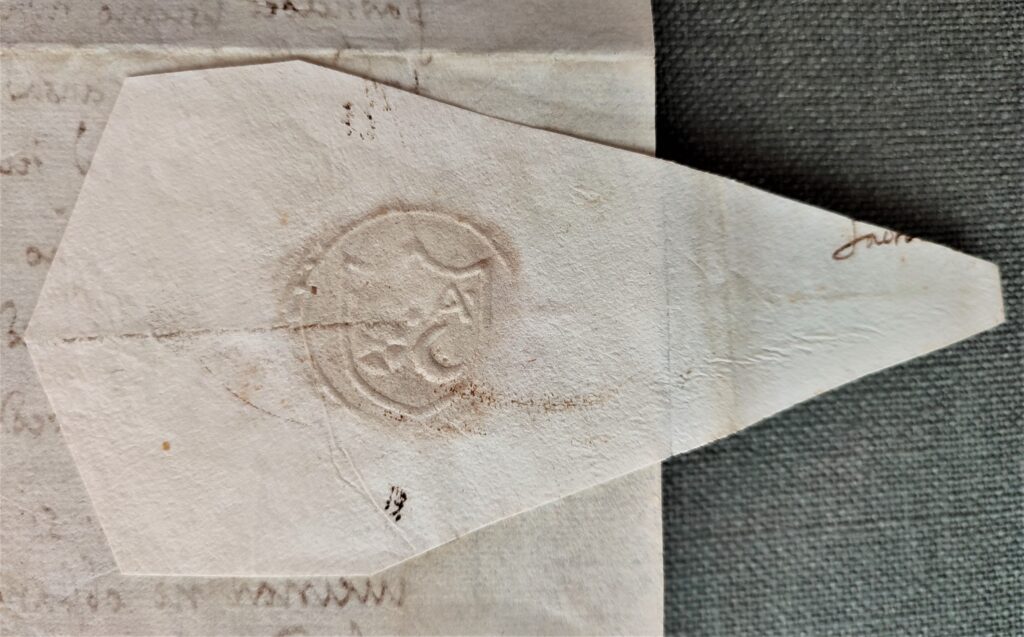
The 16th century may seem distant in time, but a lot of exciting things happened that still concern us today. 11 years earlier, in 1517, Martin Luther (1483-1546) had nailed his 95 theses to the door of the castle church in Wittenberg. Protestantism was thus born. Another famous person from this time in history is Niccolo Machiavelli (1469-1527). His book The Prince is still being printed and read. Many believe this book has influenced Europe almost as much as the Bible. The last edition in Norwegian was published as recently as 2013. Among other things, it paints a gloomy picture of how one should go about succeeding as a ruler. It may be that too many are reading it currently …
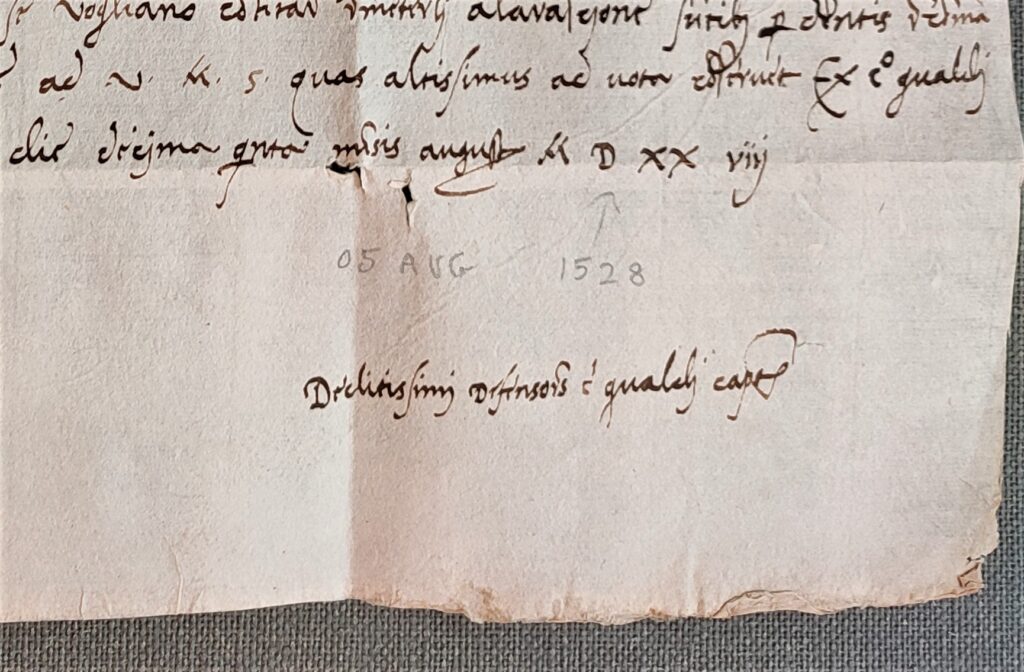
In my search for old handwritten texts, I occasionally come across things that seem too good to be true. In December 2021, I found a letter for sale that was allegedly written as early as 1528. Could it really be possible to buy a letter that was almost 500 years old? I took a chance and bought the letter. I accepted that it could be a fake.
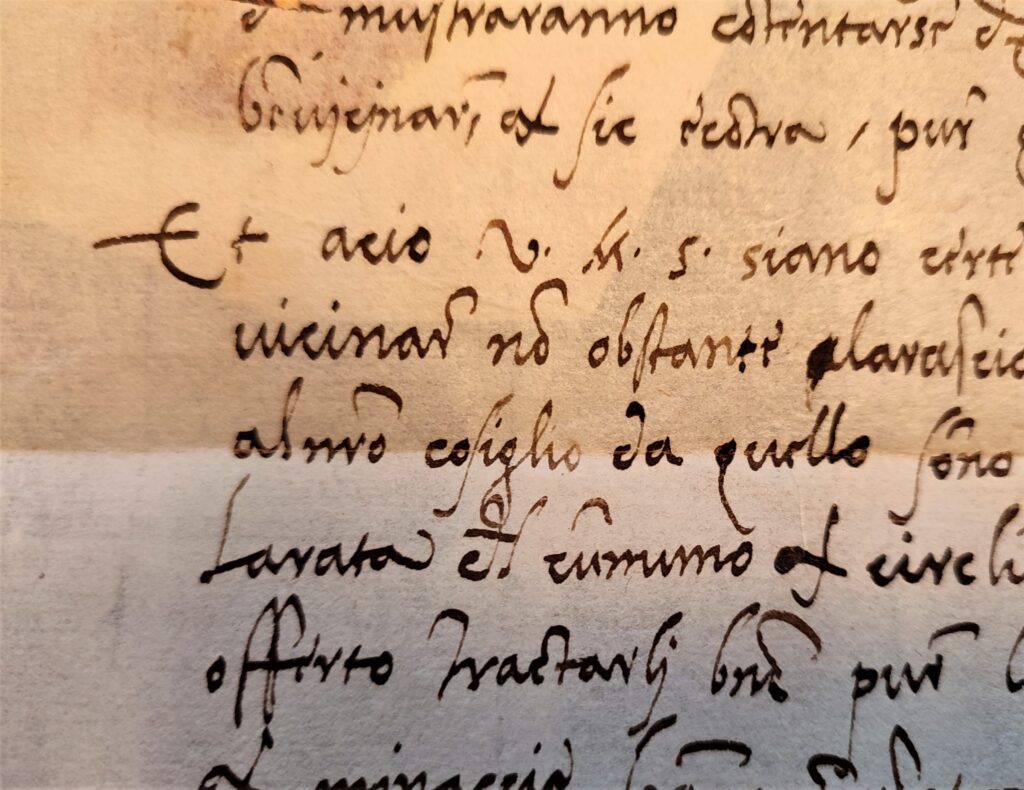
Everything now indicates that the letter is genuine. The letter was presumably too cheap for anyone to be willing to put down the work required to create a credible forgery. Just getting hold of paper that would match the age and finding ink that would be historically correct would be quite a task. Being able to get the ancient text right would require knowledge and resources that only a handful of people in the world could manage. The effort needed to produce a credible forgery would cost many times what I paid for it. It is actually a big advantage for us collectors of old letters and documents that the items have a low price. Examples can be marriage contracts, leases and letters from the 18th and 19th centuries. They exist and are offered in large quantities. In most cases, they are of good quality. Often they were written on quality hand-made paper or on animal skin (vellum [calf skin] or parchment [skin of other animals]). You can find many for sale on eBay for as low as $5-$10. It is rare that old handwritten texts cost more than $30-$50. If you’re lucky, you can get hold of copies from both the 17th and 16th centuries for less than $100. Documents that refer to famous people or events will of course cost much more, but then the challenge of maybe bying a forgery is also greater.
For me, the low price is part of the fun. Sometimes I will be the first person to examine the content of a text in centuries. Think about that. I get the privilege of examining something that almost no one else has seen. It’s like bringing sleeping mysteries to life. Sometimes I uncover secrets that would otherwise have been doomed to be forgotten forever.
In this case, it turned out that finding a person who could read the letter was the biggest challenge. It was an interesting journey of discovery in itself. There are many challenges with old texts as this. Firstly, at that time in history there were no clear rules for writing correctly. This meant for example that words were often written roughly as they sounded to the individual. Often the same word could be written in several different ways in the same text. It is claimed that William Shakespeare (1564-1616), who was born 36 years after this letter was written, spelled his own name in no fewer than 80 different ways. English texts can be difficult to understand even when the letters are easily readable. They start to become more manageable when they are written in the 18th century and onwards.
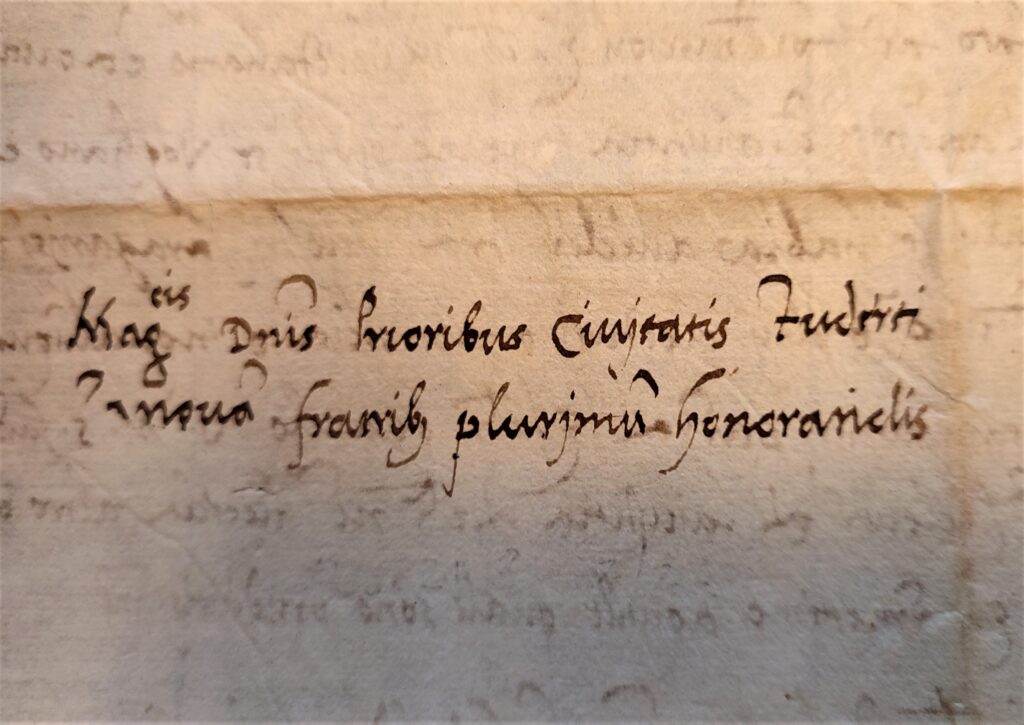
If random spelling and creative use of punctuations did not give you enough resistance, then the individual place and the individual century would have had their own special words. In addition, strange abbreviations, special letters, a multitude of personal handwritings, variations in fonts and wear and tear on ink and paper will be some of the countless challenges one faces when trying to decode an ancient text. To top it all off, the text I had obtained was written in what the seller assumed was a mixture of Latin and Ancient Italian.
The first thing I needed to do was to find the person that would be able to read the text. It was a painstaking piece of detective work. I contacted universities and text specialists throughout Europe. There was always someone helpful to pass me on to the next someone they thought could figure it out. I plowed through articles on related topics and was finally left with two names. One a researcher in Croatia and the other working in Italy. The person finally willing to figure out the text was Professor Roberto Vetrugno of the Università per Stranieri di Perugia. I felt an overwhelming sense of curiosity and relief. Finally, the letter was going to reveal its secrets. Roberto Vetrugno, and the university he works at, are incredibly enough located in the neighborhood of where the letter was once written.
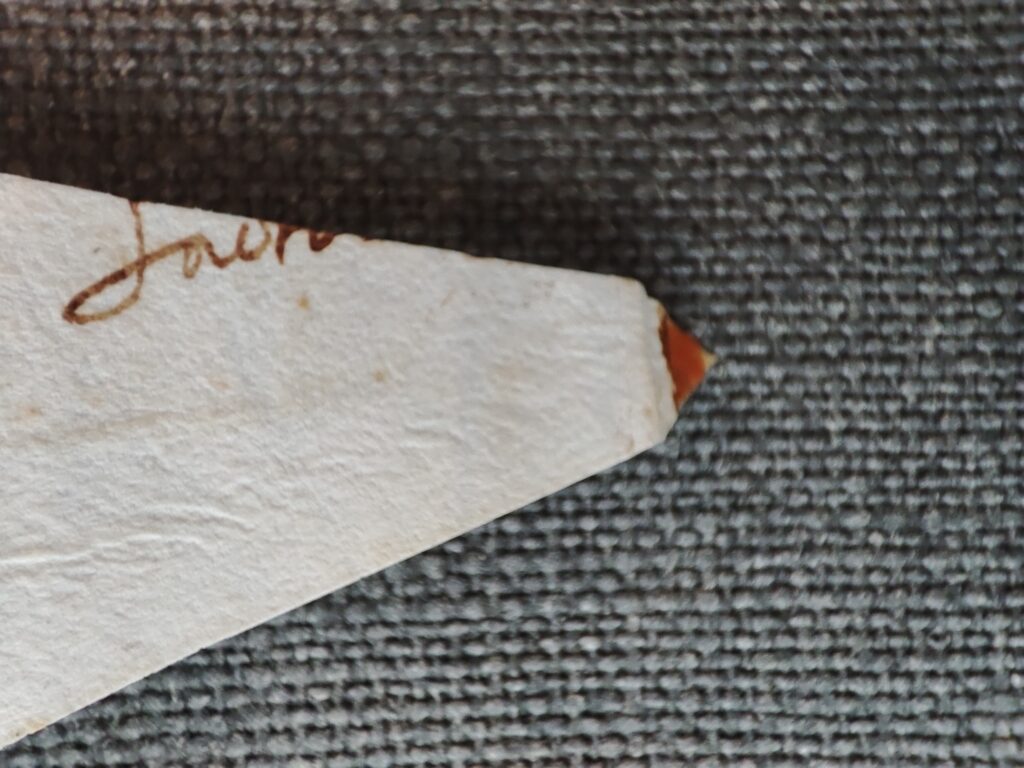
The letter was written in the village of Gualdo Cattaneo. It was a village in Umbria in Italy. Gualdo Cattaneo, Gualdum Captaneorum, was once an important place. The village can still be located on one of the hills at the foot of the Martani Mountains. Count Eduardo Cattaneo received this area as a reward in the year 975. He decided to build a fort there. The village has a history that can be linked all the way back to the Lombards . The Lombards conquered northern Italy in the year 568. The letter was written almost 1000 years after that. By that time the village had become part of the Papal States. The village was ruled by the Pope more or less continuously until Italy was united in 1860. Napoleon also disturbed the ownership of the village for a few short years.
The time perspectives are amazing. Think about this wild timeline: The Lombards took over the village around the year 568. A little over 400 years later, Count Eduardo Cattaneo was given the place as a thank you for his services to the Emperor of the German-Roman Empire, Otto II of Saxony (Red Otto). 553 years after that again someone wrote the letter this post is about. Finally, 494 years later, in 2022, I am sitting here with the letter in my hand and trying to figure out what it is all about. The time perspectives are really worth some reflection. My own country Norway has been a rich oil nation for a few decades and the environmental crisis has lasted just a little longer. Should humanity still exist in 500 years, it is difficult to imagine what that existence will look like. The letter on my desk has survived that long. It’s journey through time is close to uncomprehensible.
Finally, you will now get to know what is written in the letter. The translation has been done entirely by Roberto Vetrugno. In the letter you can read the following:
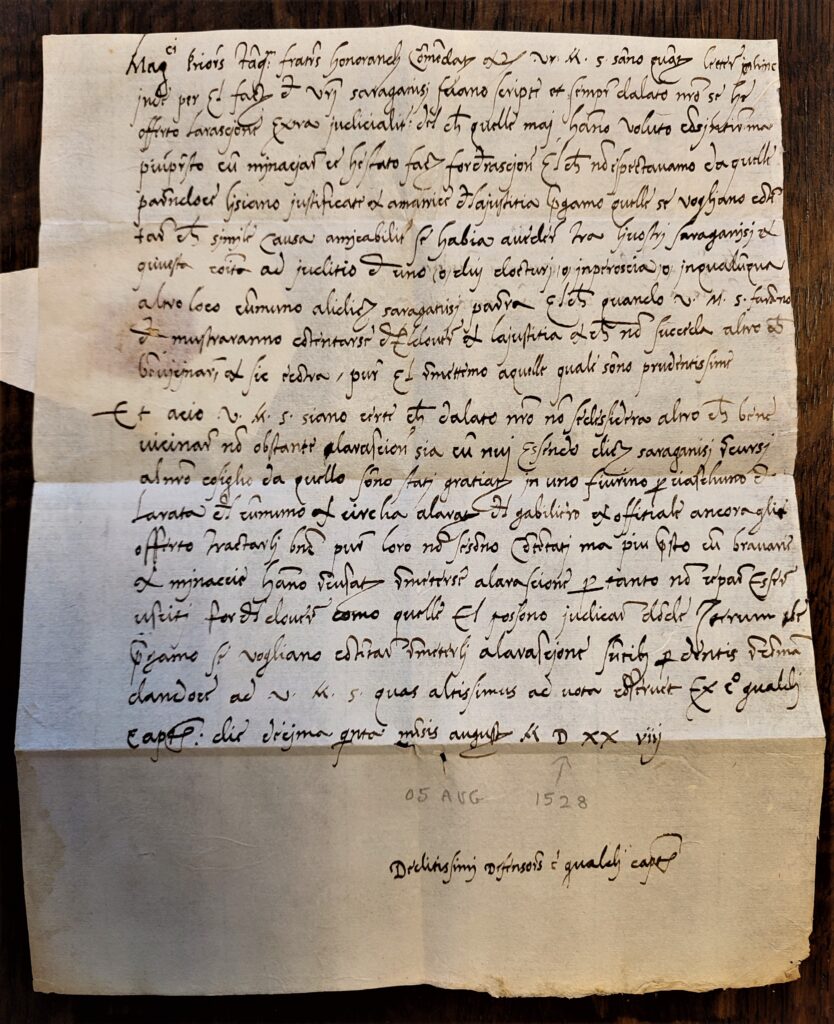
Letter from the Defender [Captain] of Gualdo to the Priors [Gentlemen, Senators] of the city of […].
You know how many letters were written on the question of your Saraganesi and always on our part a non-judicial solution was offered. They have never wanted to agree to this but rather there have been threats and we did not expect this from them […] we pray that they will be satisfied that the case be discussed between them and this city, according to the judgment of one or two electors [judges] of Perugia or of some other place […] This when you inform us that they show that they are satisfied with what is due to them and with justice and that there be good relations between neighbours.
Rest assured that for our part we desire nothing more than good neighborly relations, despite the fact that reason is on our side, since the Saragonese who have appealed to our Council have been pardoned by it with a fine of one florin each and have also been offered a bargain by the tax officer regarding the installment they must pay; yet they have not been satisfied and have even tried to win through threats and hostile acts. We therefore ask you to make them see reason. From Gualdo [Cattaneo?] 5 August 1528.
The small village of Saragano still exists. A few residents live there today. I wonder why they were once so quarrelsome and why they were so brave that they dared to oppose their neighbours. It looks like they had done something illegal. The crime led to them receiving a verdict. Instead of accepting it, they chose to make trouble. The letter says nothing about exactly what happened. At the same time, the writer of the letter feels that those he represents are not in a position where they have control over the situation. He calls the rebels Saraganese. The Saragans had appealed against the verdict and had it converted into a fine. They clearly weren’t happy with that either. They chose instead to try to win their case through threats and violent actions. The writer of the letter asks the recipient to talk to them and appeal to their reason. The writer wants good neighborliness and peace.
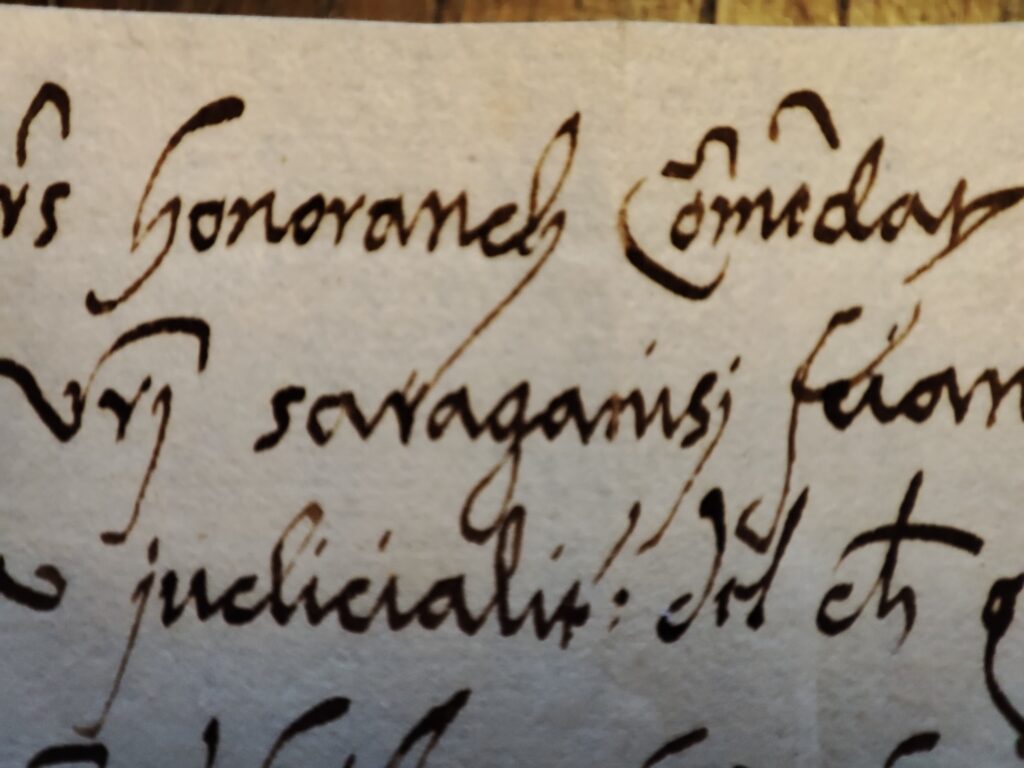
There exits several letters that seem to be related to this one, but I could only afford to buy this one. I was lucky to get it translated. Although the text and content in this case were made comprehensible, there is still work to be done to understand the whole context. Roberto suggests that it is a task suitable for local historians in the future.
The post was written by Kjartan Skogly Kversøy. The letter was translated by Roberto Vetrugno.
All photos were taken by Kjartan Skogly Kversøy.
The post owes credit to several sources in addition to the translation done by Roberto Vetrugno and the letter itself. Other sources are largely The Great Norwegian Encyclopedia and Wikipedia. You can also follow the blue links.